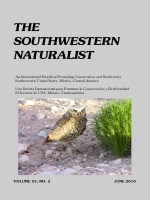The black-tailed prairie dog (Cynomys ludovicianus) is a colonial, burrowing ground squirrel. Its historic range has been reduced during the past 200 years mostly due to agricultural practices and related disturbance. Currently, urbanization is one of the biggest threats to colonies of prairie dogs in eastern New Mexico. As cities expand, colonies contract and become increasingly fragmented. Impacts of broad-scale landscape factors and disturbance by humans on behavior of black-tailed prairie dogs are unknown. To address these impacts, we chose two landscapes in eastern New Mexico, urban and rural. In spring 2006 and autumn–winter 2006–2007, we randomly selected six sites within each type of landscape and conducted 20 5-min behavioral observations at each site. We compared behavioral time budgets using the Mann-Whitney U-test. Black-tailed prairie dogs spent significantly more time being vigilant and gave more warning calls in urban areas, but they spent significantly more time foraging in rural areas. These results suggest that prairie dogs respond behaviorally to differences in type of landscape. Costs associated with higher levels of vigilance might translate as lower overall fitness due to decreased foraging in these populations. Landscape-level factors should be considered in future management decisions for this species.
How to translate text using browser tools
1 June 2010
Effects of Landscape on Behavior of Black-Tailed Prairie Dogs (Cynomys ludovicianus) in Rural and Urban Habitats
Jennifer E. Ramirez,
Gregory S. Keller
ACCESS THE FULL ARTICLE

The Southwestern Naturalist
Vol. 55 • No. 2
June 2010
Vol. 55 • No. 2
June 2010




